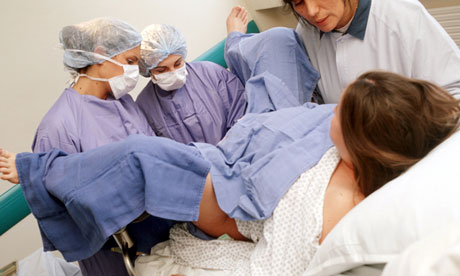
When Abigail Gutteridge went into labour one Monday evening in October 2008, she was determined to have a natural birth. But by Thursday evening her cervix had still not dilated properly, and she was writhing in pain and screaming through every contraction. By Friday, complications had developed and her doctors decided she needed an emergency caesarean section to deliver her son Marcus.
"The birth had a very bad effect on me," she says now. "It upset me every day for months, and made it very difficult to bond with my baby. Physically, it was about six months before the pain had gone completely."
The 32-year-old from Tunbridge Wells is not alone. One in 10 women in Britain today face a difficult labour leading to a caesarean, and doctors still do not fully understand why. And researchers campaigning to reduce the number of emergency caesareans in Britain (now almost 65,000 a year) say, astoundingly, there have been no major advances in childbirth since the 1950s.
Sue Wray, professor of physiology at the University of Liverpool, says: "When labour starts running into difficulties, there is still very little we can do about it. We can offer oxytocin [a hormone that affects the uterus], which can increase contractions and speed up delivery – but if that doesn't work, which happens in 50% of cases, then it means a caesarean section."
As major surgery, caesareans mean more pain, a higher risk of infection and a longer recovery, says Wray. "Prolonged labour followed by a caesarean section can have huge psychological effects on women and leave them afraid of becoming pregnant again, as well as affecting their ability to bond [with their baby] and leaving them vulnerable to depression." A caesarean also costs the NHS around £1,000 more than a natural delivery, and increases the risk of future problems.
Now a research centre currently being built by the University of Liverpool at Liverpool Women's Hospital hopes to change all this by bringing together leading researchers to study how the womb works and why labours can go wrong – and by developing safe bedside therapies. Wray, who will be the director, says a further £1.5m is still needed to provide the right research facilities, laboratory equipment, scientists and clinicians for the centre.
The unit is desperately needed because obstetrics now lags way behind disciplines such as cardiology, says Wray. In the last half century, cardiology has developed bypass and open-heart surgery, statins and beta blockers. "We now have more than 50 different drugs licensed in the UK for heart failure, and we need an equivalent for the uterus. There is an overlap with many of the mechanisms of the heart – the challenge is to develop drugs that work on the uterus, without harming the baby."
Professor Andy Shennan, consultant obstetrician for the baby charity Tommy's, says a lack of funding has held birth research back: "Obstetrics has always been a bit of a poor relation, and part of the reason is that pregnancy problems are something of a taboo subject. Research has until now been chronically underfunded, and has relied on charities and people putting their hands in their pockets. But the NHS has the potential to do fantastic research that would benefit many thousands of women and their families."
Wray's team has already shown that high cholesterol levels may lead to an increased risk of an emergency caesarean, which suggests that statins may be useful in late pregnancy. The team are also working with the toxic gas hydrogen sulphide (made naturally in the body), which could reduce muscle contractions and potentially lead to the development of drugs to delay preterm delivery and prevent prolonged labour. Then there are the pomegranate seed extracts, which contain a steroid that could be used to stimulate uterine contractions.
"Within five to 10 years we could start making an impact on caesarean section rates, with sound scientific data and the resources to take it to clinical trials," says Wray.
For women such as Gutteridge, now pregnant again and determined to have a caesarean this time rather than risk another labour, those solutions cannot come fast enough.

